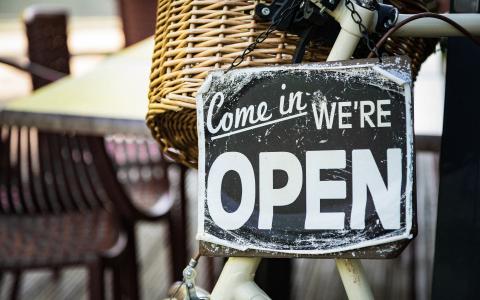
The next (last?) fiscal stimulus for coronavirus relief is expected this week. Wall Street wants it, so the big portfolio managers and the bears are busy talking up the economic apocalypse if Mitch and Nancy don’t act fast.
In the meantime, the Fed is once again the backstop. That’s keeping enough of the investment community at ease.
“The Federal Reserve has shown itself capable and willing to do what is necessary not only for the U.S. economy but also for the global financial system,” says Robert Horrocks, CIO of Matthews Asia. “In that sense, they are worthy of the market's optimism.”
Where’s the pessimism coming from? Well, that’s easy.
The ever-expanding coronavirus everywhere (except in China where it all originated) — including best case country Japan — and early lockdown states like California, and early lockdown nations like Argentina, whose president just extended lockdown orders until August 16.
In order to avoid the coronavirus meteor set to wipe us all out like the Jurassic Period, the shield is fiscal stimulus. But fiscal stimulus cannot be universal basic income forever. Fiscal stimulus needs to be designed to get the economy going, protect hospitals, and give companies the wherewithal to reopen and rehire.
Brian McCarthy, chief market strategist for Macrolens, a Stanford, Connecticut based investment research firm, summed it up best in a note to clients this weekend: Fiscal policy needs to either foster that reopening or “get out of the way.”
David Lefkowitz, head of equities Americas at UBS Financial Services, said something similar recently in a client note.
“Investors are focused on what the next fiscal package may look like. This will be very important as a number of companies have called out how government support has been crucial to the recovery and businesses anticipate that more will be needed,” he says.
In other words, the support has to get companies ready to reopen, because recopening is recovery. Life support isn’t recovery. It’s say-your-prayers.
If lockdowns are increasingly unwound, the economy will continue the V-shaped trajectory seen in the stock market. If heavy-handed restrictions continue much longer, the Payroll Protection Plan and $1,200 stimulus checks aren’t going to save the hardest hit individuals or businesses from financial ruin. A lot of that will just end up going to pay taxes, anyway.
If hospitals can handle the case loads, the ongoing restrictions are accomplishing what, exactly? Last week, Rhode Island reported 60 new cases and put a stop on its phase four reopening plans. They are stuck in phase three and lowered the number of people that can gather at private parties and outdoors. Rhode Island governor Gina Raimondo said the problem with the increase in cases was that young people were “partying too much.”
She did not say what the hospital rates were like, but Raimondo did add that overall the state was doing well.
If the coronavirus isn’t going away, and it hasn’t even in states that were hit by the aftershock of the NY epicenter, the odds of catching it this week versus next month are the same. Hiding in the house hasn’t worked. Even Governor Andrew Cuomo said as much back in April when he was surprised by the rising number of cases in the middle of strict lockdowns, and among people who claimed they were not working, and not going out.
Argentina has been on lockdown since March 20 and is extending lockdowns for two more weeks. The government there is blaming the locals for having grown tired of being closed for business and stuck looking at the same 10 people every day for the past five months.
McCarthy warned his clients not to get over-reliant on stimulus headlines this week.
A smaller than expected package would likely mean lower Fed unemployment insurance, or a shorter extension of those $600 per week benefits. Any aid package that protects hospitals and hardest hit businesses should give the economy enough of the salt and sugar-water drip needed to get through the summer and out of ICU.
Fingers, toes and eyes will be crossed for the fall when college students return to campus. Many schools will require mandatory quarantining in friend groups, with online learning for the first two weeks, then testing, before a return to at least some of the traditional college set-ups.
A fiscal package that facilitates more foot-dragging on the economy coming back to normal will do more damage to the supply-side as businesses reduce orders for everything from food to home goods.
The next few weeks are when companies prepare for the busy holiday season, starting with Halloween. Will there even be a Halloween? Why order all those costumes for sale if the view is that unscathed states will be hit by first (Nebraska) or second waves (NY) in the fall.
“Markets and the macroeconomy are in a one-variable world right now.,” McCarthy says. “The rate at which we can return to economic normalcy will determine the path of markets, the economy,” he says.
There is as much a disconnect in the stock market — tech stocks great, the rest not as great — as there is between Wall Street and government.
Wall Street, for the most part, thinks we have to find a way to live with the coronavirus.
Governments, on the other hand, concerned with public health and safety more than Goldman Sachs GS is, are looking to put a lid on a fast spreading virus that, while it may not be as deadly as once imagined, forces them to be prepared for the worst.
This article originally appeared on Forbes.



